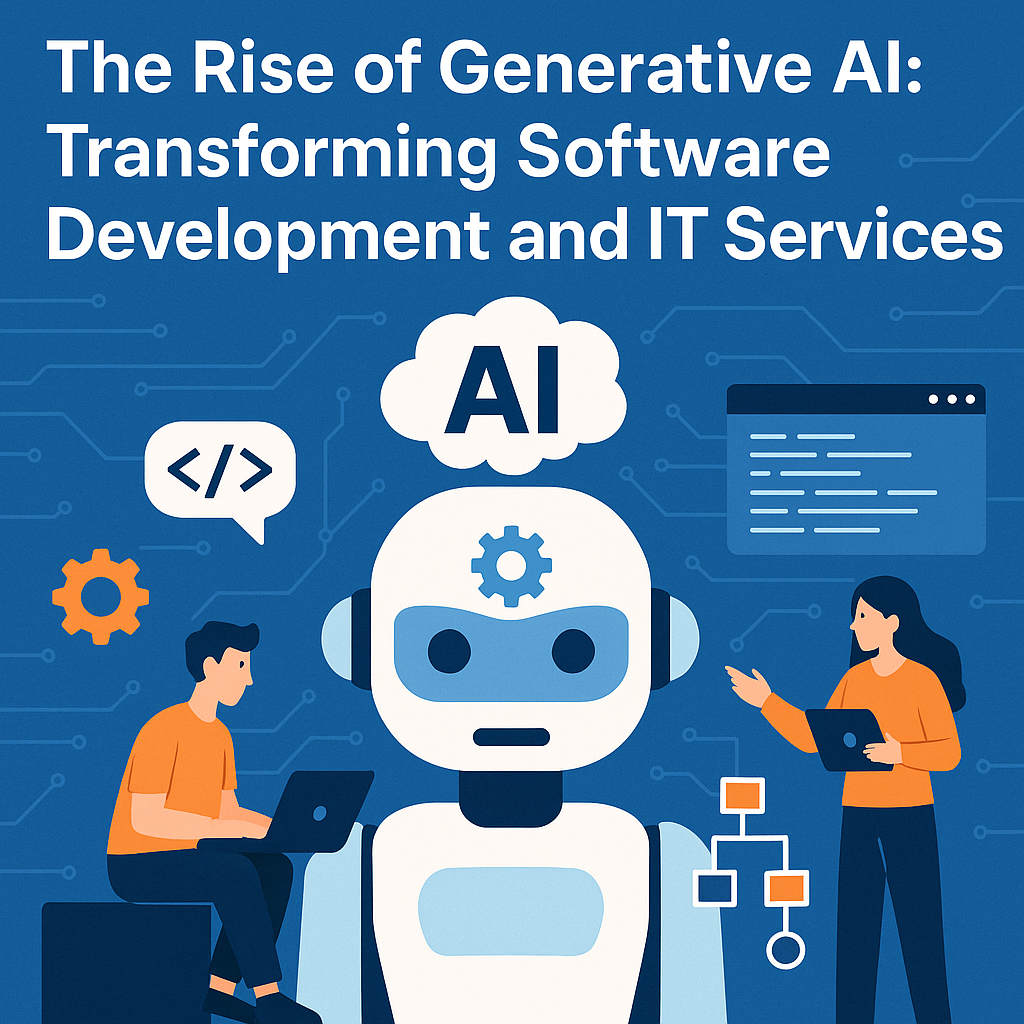The Rise of Generative AI: Transforming Software Development and IT Services

In recent years, Generative AI has emerged as a disruptive force reshaping industries across the globe. Among the most significantly impacted sectors are software development and IT services, where AI is redefining how applications are designed, developed, tested, and deployed.
What Is Generative AI?
Generative AI refers to algorithms that can create new content — text, images, code, audio, and more — by learning from existing data. Unlike traditional AI models that classify or predict based on data, generative models can "generate" entirely new data with realistic and useful qualities.
In the realm of IT, this capability means tools that can write code, generate documentation, design user interfaces, and even automate debugging — tasks traditionally performed by skilled developers.
How Generative AI Is Impacting Software Development
1. AI-Assisted Coding
Tools like GitHub Copilot and Amazon CodeWhisperer can understand developer intent and generate code snippets in real time. This not only accelerates development cycles but also reduces the learning curve for junior developers.
Key Benefits:
-
Faster development
-
Fewer syntax errors
-
Code suggestions based on best practices
2. Automated Testing and Bug Fixing
Generative AI can now create unit and integration tests automatically, improving software reliability. AI-driven debugging tools can identify root causes and even suggest fixes.
Impact:
-
Quicker turnaround in QA
-
Reduced dependency on manual testers
-
Improved software quality
3. Natural Language to Code
Developers and non-developers alike can describe functionality in plain English and receive working code. This democratizes development and opens new doors for citizen developers.
Enhancing IT Services with Generative AI
1. Smarter Chatbots and Virtual Agents
IT support desks are being revolutionized by AI-powered bots that provide real-time assistance, resolve tickets, and even troubleshoot systems.
Why It Matters:
-
24/7 support without human fatigue
-
Consistent service quality
-
Reduced support costs
2. Automated Documentation and Knowledge Management
Generative AI can create and update documentation, FAQs, and user guides, making knowledge easily accessible and up to date.
3. Predictive IT Operations (AIOps)
Using generative models, organizations can predict system failures, suggest optimizations, and auto-remediate incidents — reducing downtime and improving system efficiency.
Challenges and Considerations
Despite its benefits, generative AI in software and IT services isn't without challenges:
-
Security Risks: AI-generated code may introduce vulnerabilities.
-
IP Concerns: Who owns AI-generated output?
-
Quality Control: Human oversight remains critical to ensure correctness.
Organizations must adopt strong governance frameworks, ethical guidelines, and robust validation processes to safely leverage generative AI.
The Future Ahead
Generative AI is not here to replace developers or IT professionals — it's here to amplify their capabilities. As tools become more powerful and accessible, the focus of human effort will shift from repetitive coding to more strategic, creative, and decision-making tasks.
Early adopters of generative AI in software and IT services are already reaping the rewards: faster time to market, improved code quality, and better customer support. As the technology matures, those who fail to adapt risk falling behind.
Conclusion
The rise of generative AI marks a new era in software development and IT services. By embracing this technology thoughtfully, businesses can enhance productivity, improve service delivery, and stay competitive in a rapidly evolving digital world.
3 months before